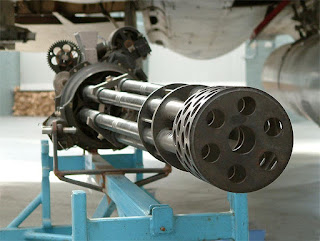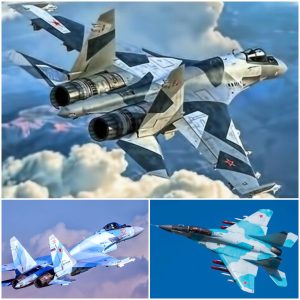Richard Jordan Gatling, an inventor, designed the world’s first successful rapid-fire weapon just before the start of the American Civil War. Because it was spring-loaded and hand-cranked, this weapon cannot be considered a “machine gun” in the modern sense. The operation of the Gatling gun was centered on a cyclic multi-barrel design that allowed for its rapid fire and made it easier for the barrels to cool down. This design was the forerunner to the weapons that were to come in the future.
During the American Civil War, the Gatling gun was put to sporadic use, but it really came into its own during the Spanish-American War, when it was used to great effect in the conflict that took place in Cuba. The concept of multi-barrels was utilized by the United States military for 45 years before it was deemed obsolete in the year 1911.
.jpg) |
| M61 Vulcan Gatling |
What’s This, a New Gatling Gun?
Engineers working for the United States Army Air Force came to the conclusion that, as a result of the development of jet aircraft, a higher rate of fire would be required. They also came to the conclusion that single-barrel “revolver cannons” would not be adequate for the task at hand. Instead, the designers working in the Armament Division of General Electric considered applying the idea of using multiple barrels, which originated in the 19th century. Gatling had, in fact, developed a prototype of his gun in the early 20th century that was capable of reaching a rate of fire of nearly 3,000 rounds per minute. The hand crank had been replaced with an electric motor in this version, and the gun had been fitted with an electric motor.
Despite this, the United States military identified several issues with the technology, and in all honesty, the concept was years ahead of its time.
1946 saw the beginning of General Electric’s involvement in “Project Vulcan,” which aimed to create a 20mm rotary cannon with the potential to fire 7,200 rounds per minute. Because of the use of multiple barrels, barrel erosion and heat generation were reduced, which resulted in an increased lifespan for the weapon. The M61 was developed for use in modern aircraft, to be driven hydraulically and primed electrically. In addition to this, it was designed to make use of a linkless ammunition feed system.
The Beginning of the Vulcan War
In April of 1965, an F-105 Thunderchief in Vietnam was the first aircraft to use the M61 Vulcan. Since then, it has also been used on the F-15, F-16, and F-22 aircraft of the Air Force, as well as the F-14 and F/A-18 aircraft of the Navy. In addition to that, it has been integrated into the side-firing systems of both the Fairchild AC-11 and the Lockheed AC-130 gunships. The weapon has a rate of 6,000 rounds per minute (or “rounds per minute”).
The current improved versions of the M61 are the M61A1 and the M61A2, both of which are produced by General Dynamics, which recently acquired the Armament Division of General Electric. The M61A2 is 20 percent lighter than the M61A1 and is intended for use in situations where the weight reduction of the weapon system is essential.
On AH-1G Cobra helicopters, other variants of the Vulcan platform have also been installed at various points in time. The M61 Vulcan is not only used in aircraft, but it is also the foundation for the close-in weapon system known as the Mk 15 Phalanx, which is used by the United States Navy. The Mk 15 Phalanx is a rapid-fire, computer-controlled, radar-guided gun that can be used against anti-ship missiles and other close-in threats both on land and at sea.








